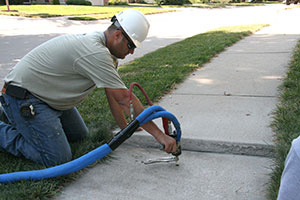In the realm of construction and infrastructure, achieving foundational excellence is paramount to ensuring the longevity and reliability of structures. Navigating structural integrity requires a meticulous approach, and professional repair services play a pivotal role in this endeavor. These services act as the guardians of architectural sustainability, addressing issues that may compromise the stability of buildings and infrastructure. Whether faced with the challenges of aging structures, environmental wear and tear, or unforeseen accidents, the expertise of repair professionals becomes indispensable. Their mastery lies not only in fixing visible damages but also in identifying latent concerns that could evolve into more significant problems over time. By leveraging advanced technologies, these repair specialists employ innovative methods to assess, diagnose, and rectify structural issues. From concrete restoration to reinforcing steel structures, their arsenal of techniques spans a spectrum of materials and methodologies, ensuring a comprehensive approach to maintaining structural soundness.
One of the cornerstones of effective structural repair is the ability to conduct thorough inspections. Repair professionals employ cutting-edge tools and techniques to assess the structural health of buildings and infrastructure. This involves not only identifying visible damages but also employing non-destructive testing methods to detect hidden flaws. By utilizing tools such as ground-penetrating radar and ultrasound technology, repair specialists can delve into the core of materials, unveiling potential weaknesses that may compromise structural integrity. This meticulous inspection process serves as the foundation for crafting tailored repair solutions, addressing specific issues with precision and foresight. In the pursuit of foundational excellence, repair services often grapple with the challenges posed by aging structures. Over time, buildings are subjected to a myriad of stressors, including environmental factors, seismic activity, and the natural aging process. The cumulative impact of these forces can lead to deterioration, affecting the structural integrity of the edifice.

Repair professionals are adept at not only mitigating the visible effects of aging but also implementing preventive measures to fortify structures against future wear and tear. This proactive approach involves the strategic application of protective coatings, reinforcing materials, and state-of-the-art repair techniques, ensuring that structures stand resilient against the test of time. Structural integrity is not only compromised by external factors but can also be jeopardized by unforeseen accidents or disasters. Repair services play a crucial role in the aftermath of such events, swiftly responding to restore stability and functionality. Whether it is repairing structural damage caused by natural disasters, accidents, or other emergencies, read more now these professionals operate with a sense of urgency, employing their expertise to bring damaged structures back to a state of strength and reliability. Their ability to assess the extent of the damage, develop effective repair plans, and execute them with precision is instrumental in rebuilding communities and restoring a sense of normalcy.